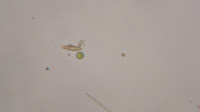Egmond, Wim Van [internet]. [cited 2009 Nov 24] Available from http://www.microscopy-uk.org.uk/mag/indexmag.html?http://www.microscopy-uk.org.uk/mag/wimsmall/rotidr.html
Baqia, Guruswamy, Liu, and Rizki [internet]. [updated 1 May 2000] Berkley UCMP [cited 2009 Nov 24] Available from http://www.ucmp.berkeley.edu/phyla/rotifera/rotifera.html
Wallace, Robert Lee [internet]. [updated 2009] Ripon, Wisconsin: Ripon College, Deaprtment of Biology [cited 2009 Nov 24] Available from http://icb.oxfordjournals.org/cgi/content/full/42/3/660
Biodiversity occurrence data provided by: Australian Antarctic Data Centre: Rotifers of Macguarie Island (accessed through GBIF Data Portal, www. gbif.net, 2009-11-24)
K.L. Shulz. [Internet]. Syracuse, NY: SUNY College of Environmental Sciences and Forestry, Department of Environmental and Forest Biology [cited 2009 Nov 24] Available from http://www.esf.edu/efb/schulz/Limnology/ZoopDiversity.html
Donner, Joseph. Rotifers p. 10-13.
Prescott, G.W. [1954] How to Know The Freshwater Algae Dubuque, Iowa,:W.C. Brown Co.
Prescott, G.W. [1962] Algae of the Western Great Lakes Area. Dubugue, Iowa: W.C. Brown Co.
Patterson, G.W. Drawings by S. Hedley. [1996] Free-living Freshwater Protozoa--a Colour Guide. New York (NY): John Wiley & Sons.
Smith, Douglas Grant [2001] Pennak’s Freshwater Invertebrates of the United States. 4th ed. New York (NY): John Wiley & Sons. p. 129-191.










